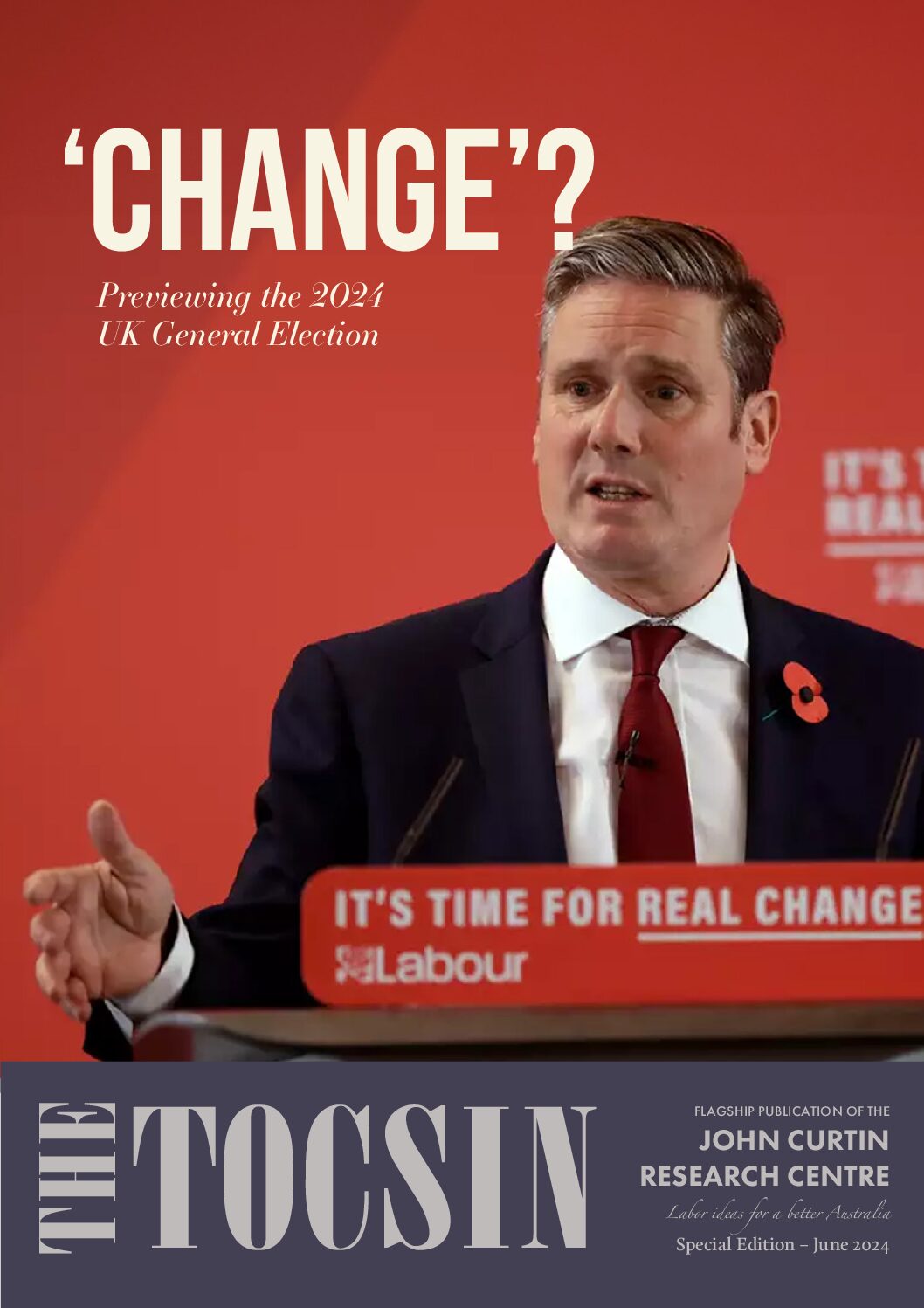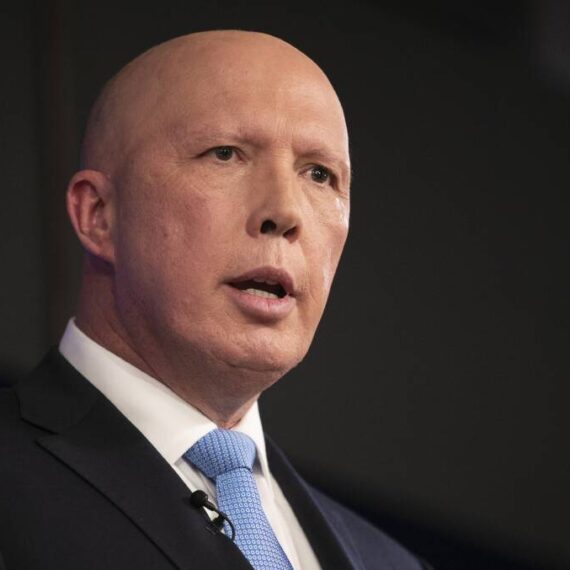Treasurer Jim Chalmers recently handed down the Albanese Labor government’s first full budget, which may be destined to be seen as more transformational in hindsight than in the moment. Imbalances and neglect across such a wide range of priorities is so deep that none of them can be resolved in a single budget. Housing affordability, wages, poverty, Medicare, power bills, the energy transition, productivity, strategic capabilities, skills shortages, women’s economic equality, the public service, the growing importance of the care economy, technological transformations, climate destabilisation: on all of these priorities, a foundation has been laid from which early steps toward restoration have been taken. Bet even Chalmers himself describing it as “foundational”, acknowledges that this is the beginning (not the culmination) of rebuilding Australia after the decade of neglect.
The national agenda is as packed as it has ever been, but global inflation makes capacities as limited as they’ve been in half a century. Limiting inflation was an economic necessity. That it was a Labor government that brought in the first surplus in 15 years also has real political consequences: it solidifies trust, empowering the government to take bolder action in forthcoming budgets. Since the challenges we now face will require sustained boldness over several years, that investment in trust will come to be seen as a wise choice.
Among the priorities that face the government, we discuss below some of the big hits and a few where opportunities were left on the field.
Medicare
The centrepiece of Labor’s foundational budget was, of course, the transformational investment in Medicare. $3.5 billion to triple the bulk billing incentive for Australians with the most health is a critical foundation for restoring health care in Australia.
The budget also included significant new efforts to prevent vaping, a new national lung cancer screening program, and $91.1 million to begin establishing the Australian Centre for Disease Control (ACDC). Regretfully missing was the complementary step of investing in infection control and indoor air safety: a deflationary investment that has become the most essential foundation for public health and for reducing labour shortages across the economy. That this critical part of public health was ignored should raise questions about whether the Chief Medical Officer is the right person to appoint to lead the ACDC.
Women’s economic equality and safety
Labor’s budget backed its actions with money when it comes to the commitment to ending the neglect of 52 per cent of Australians. Improving workforce participation and economic inclusion while closing the gender pay gap, as well as ending violence against women were all headline priorities of the budget. Importantly, improving workforce participation was approached by expanding eligibility for Parenting Payment Single to single principal carers with children up to age 14. Facilitating participation rather than penalising people based on circumstance will always be more productive.
Foreign policy and defence
Foreign policy continued to be a star performer for the Albanese government, much to the confusion of those who prefer to “speak loudly while building no sticks” and those who prefer to kowtow to the biggest bully. $1.9 billion in funding for the government’s Pacific program highlights how central the region is to our national interests. That the emphasis was on diplomacy, strategic communications and countering disinformation shows how integral the region is to modern diplomacy.
But preparing for future challenges requires investments in defence and defence industry that are constrained by skill shortages even more than by inflation. Creative Australian policy thinking may be required to resolve this. Australia has long been a pioneer of education financing. Working initially with AUKUS partners to establish bilateral HECS arrangements would allow Australia to draw on international students from more diverse markets, setting the education sector on a more sustainable foundation while also helping resolve skills shortages in the defence industry. It would also give Australian students more chances to study abroad, deepening our international connections and facilitating investments in the skills that will determine the future. Among those, we’d like more government investment in education and research into Artificial Intelligence. We should be spending billions on AI which, as we have argued, will be a massive job-creating, productivity enhancing opportunity.
Inflation
Inflation still looms over every decision in this budget.
There are welcome initiatives to control the cost of living. The $14.6 billion cost-of-living package will make healthcare, energy bills, and housing more affordable, while targeting income support through JobSeeker, youth allowance and others. The energy-bill rebate is a smart way to target relief where it is most needed: rather than attempting to control prices across the economy it invites only those who need help to step forward and receive it. The budget also begins to scale up the build-to-rent sector, which we have long argued is a crucial piece of the puzzle of tackling the housing affordability and supply crisis.
A better and fairer tax system will also help rebalance the economy to take heat away from pockets of inflation and ensure the government is able to properly resource essential priorities. A global minimum tax and a domestic minimum tax on multinationals, as well as a reduction in tax concessions available to ultra-high super account holders, will each help ensure the sustainability of public finances.
But the government may not have fully recognised the degree of control it has over some of the main drivers of inflation:
Inflationary invasion of Ukraine
First, Russia’s ongoing invasion of Ukraine has created global shortages of food, oil and gas, but the budget does not reflect a specific agenda to force Russia to relent. The sooner Russia abandons its efforts to impose itself on Ukraine, the sooner the cost of energy and basic food will return to normal. As Ukraine’s needs are more similar to our past needs than our future needs, some capabilities that we intend to use less of could be diverted to support Ukraine. Demonstrating that military imperialism has no place in the modern world would also make other potential catastrophes in our own region less likely.
Inflationary climate disasters
Second, climate disasters have driven up the costs of domestic food production and created new demand for reconstruction.
The budget laid foundations to help stabilise the climate with significant investments in energy transition, headlined by the $2bn “hydrogen headstart” program. This program will demonstrate commercial viability, bringing the technology to a level of readiness that we have consistently argued will be crucial for a decarbonised industry and economy, especially in manufacturing and steel production.
Unfortunately, we no longer have the luxury to focus only on mitigation: we also have to adapt to the cost of climate disasters today. The previous government relied heavily on defence for disaster response and that has to change. However, the effectiveness of the ADF demonstrates the value of well organised basic skills to disaster response. That raises an opportunity to turn our national resilience capabilities into a form of a limited job guarantee, whereby anyone who wanted to develop the relevant skills to join a disaster reserve could be paid to undertake training. This again deals with entrenched disadvantage while simultaneously reducing inflation, because it would help manage supply-side shocks more efficiently and ensure a more equitable distribution of resources, reducing pockets of inflationary pressure. It would also give Australia a national capability that we need.
The Pacific Package included $2 billion, mainly in security assistance. Australia wants to ensure that when PICs have security needs, they turn first to Australia. But the Pacific Islands identify their most pressing security needs as climate related, not defence related. As future budgets invest in developing our own climate disaster resilience, we should integrate their needs into the capabilities we invest in and develop. We can contain inflation by (not instead of) responding to these major challenges.
Inflationary infection driven labour shortages
And third, the pandemic continues to contribute to excess labour shortages, but the budget lacked funding for any measures to reduce infections in workplaces, schools, hospitals, aged care centres, or people’s homes.
Schools are particular hotbeds of infection, exacerbating the teacher shortage but also causing working parents to miss more days of work either because they or their kids are sick. This is how illness contributes to inflation, and how infection control is deflationary. Expanding the School Upgrade Fund would have been the single easiest for the budget to contribute to deflation: an extra $92 million would improve air safety in an additional 3,700 schools where the planning work has already been done: all that is missing is the funding approval, and the number of sick days can be reduced.
The government is not impotent in the face of inflation: it has controls to influence the causes, even in the relatively short term. The more the government addresses these causes, the sooner we will return to economic normalcy and the more freedom the government will have to live up to its promise of no one held back, no one left behind.
The treasurer says this budget laid the foundation for future reforms and responding to major challenges. Now is the time to build on that foundation. Australians have high expectations for this government. The budget was an opportunity to rule a line under Australia’s decade of neglect. The next task is to accelerate the transformation to the tolerable limits because the task ahead of us is immense. What we have seen however, is that federal Labor has formed the best government Australia has had in 25 years. If anyone is up to the task, it is this Labor government.





